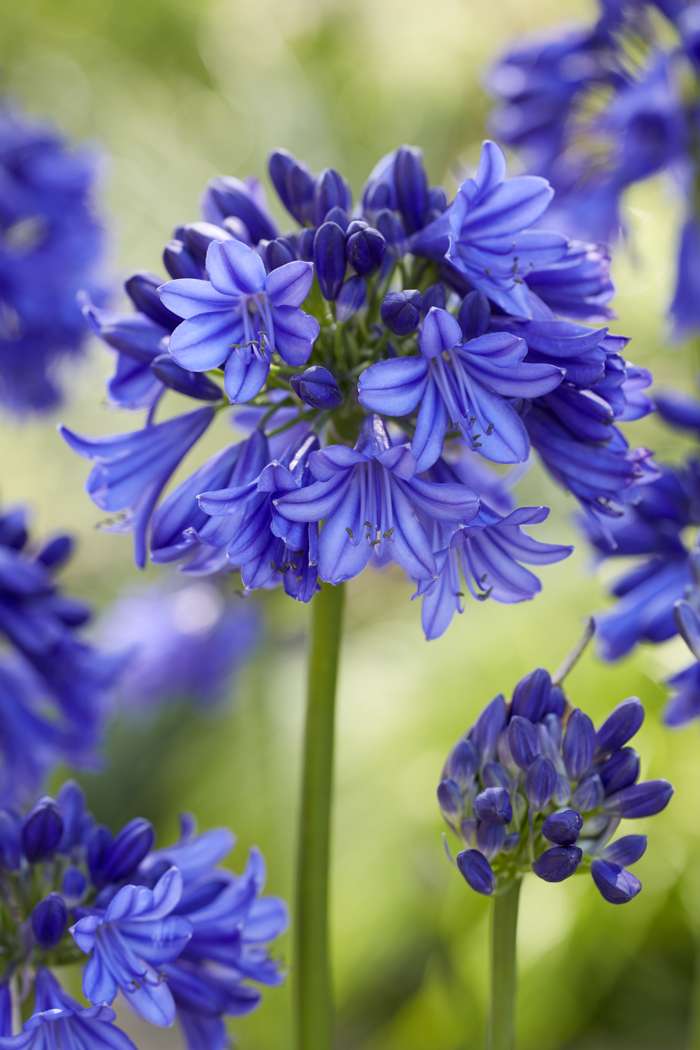Agapanthus Varieties: Selecting the most effective for Your Landscape
Wiki Article
Mastering the Art of Agapanthus Treatment: Important Steps for Healthy And Balanced Growth and Dynamic Flowers
In the world of horticulture, the growing of agapanthus stands as a gratifying endeavor for those that seek to support these classy blooming plants. With their striking blossoms and graceful vegetation, agapanthus has actually caught the attention of garden enthusiasts worldwide. However, achieving optimal growth and vibrant blooms calls for a nuanced strategy that encompasses different necessary actions. From selecting the appropriate variety to mastering pruning strategies, the journey towards growing prospering agapanthus plants is multifaceted and holds the vital to unlocking the full potential of these botanical gems.
Picking the Right Agapanthus Selection

When choosing the right Agapanthus range for your garden, consider elements such as climate suitability, bloom shade, and development routine. Agapanthus, generally recognized as Lily of the Nile or African lily, comes in a variety of colors varying from tones of blue and purple to white. Choose a bloom color that complements your existing garden scheme to develop a harmonious landscape. In addition, consider the environment in your region to guarantee the Agapanthus variety you select can thrive in your specific conditions. Some selections are extra forgiving of chilly temperatures, while others prefer warmer climates. Comprehending the growth habit of various Agapanthus selections is critical for appropriate placement within your garden. Some varieties have a clumping growth practice, perfect for containers or boundaries, while others have an even more spreading nature, suitable for ground cover or mass growings. By thoroughly evaluating these elements, you can choose the perfect Agapanthus selection to improve the appeal of your garden.
Ideal Planting Problems
Taking into consideration the optimum environmental requirements is necessary for effective Agapanthus farming. Agapanthus grows in well-draining soil with a slightly acidic to neutral pH level. When growing, pick a location that gets complete sunshine to partial shade. In hotter environments, supplying some mid-day shade can stop scorching of the leaves. Agapanthus plants are sensitive to chilly temperature levels and need to be shielded from frost during winter season.To guarantee healthy growth and vivid blooms, plant Agapanthus light bulbs at a depth of regarding 2-4 inches and area them 8-12 inches apart. Mulching around the base of the plants aids keep wetness and subdues weed growth.
Watering and Feeding Tips
Maintaining correct moisture degrees and offering crucial nutrients are vital elements in the treatment regimen for Agapanthus plants. pop over to this web-site When it comes to sprinkling Agapanthus, it is crucial to strike an equilibrium. These plants choose constantly wet soil but are vulnerable to root rot if overwatered.Feeding Agapanthus is important for promoting healthy and balanced growth and respected flowers. Apply a well balanced fertilizer, such as a 10-10-10 formula, in the very early springtime as new development arises. By following these watering and fertilizing tips, you can ensure your Agapanthus plants thrive and generate vibrant, lasting blooms.
Trimming Strategies for Agapanthus
Pruning Agapanthus plants at the appropriate times and with correct techniques is essential for maintaining their wellness and advertising optimal development and blooming. The optimal time to prune Agapanthus is in late winter months or very early springtime before brand-new growth arises.Deadheading invested flowers can additionally reroute the plant's power into creating even more flowers rather than establishing seeds. If you want to gather seeds for breeding, leave some blossoms to dry and fully grown on the plant.
Remember to use tidy, sharp devices to make specific cuts and reduce the danger of presenting conditions. Agapanthus. Routine pruning will help maintain your Agapanthus looking cool and healthy while making certain a plentiful display screen of beautiful blossoms
Dealing With Typical Pests and Conditions
After ensuring correct pruning techniques for Agapanthus, it is view it now vital to deal with typical pests and conditions that can influence the health and vitality of these plants. Agapanthus plants are usually sturdy yet can still come down with specific issues. One usual insect that affects Agapanthus is the Agapanthus gall midge. This small, orange fly lays its eggs in the vegetation, bring about distorted growth and blossom buds that fall short to open up. To battle this pest, trim and ruin any affected plant components and consider making use of insecticidal soap.Another typical issue is fungal fallen leave area, which presents as dark lesions on the fallen leaves. To stop fungal diseases, guarantee good air circulation around the plants, avoid overhanging watering, and get rid of any type of contaminated leaves without delay. In addition, Agapanthus plants can deal with origin rot if they are grown in badly draining pipes dirt. To avoid this, plant Agapanthus in well-draining dirt and avoid overwatering. By being attentive and taking timely activity versus bugs and illness, you can help your Agapanthus plants thrive and produce dynamic flowers.

Conclusion
Finally, understanding the art of agapanthus treatment entails selecting the appropriate variety, supplying suitable planting problems, appropriate watering and fertilizing, appropriate pruning methods, and dealing with typical insects and illness. By complying with these essential steps, you can guarantee healthy development and dynamic blossoms for your agapanthus plants. Bear in mind to on a regular basis keep an eye on and maintain your plants to advertise their total well-being and durability.To make sure healthy growth and vivid flowers, plant Agapanthus bulbs at review a depth of concerning 2-4 inches and area them 8-12 inches apart. By complying with these watering and fertilizing ideas, you can ensure your Agapanthus plants grow and produce vibrant, long-lasting blossoms.
One common pest that affects Agapanthus is the Agapanthus gall midge. Furthermore, Agapanthus plants can endure from root rot if they are grown in improperly draining soil. By complying with these important actions, you can make certain healthy growth and dynamic blossoms for your agapanthus plants.
Report this wiki page